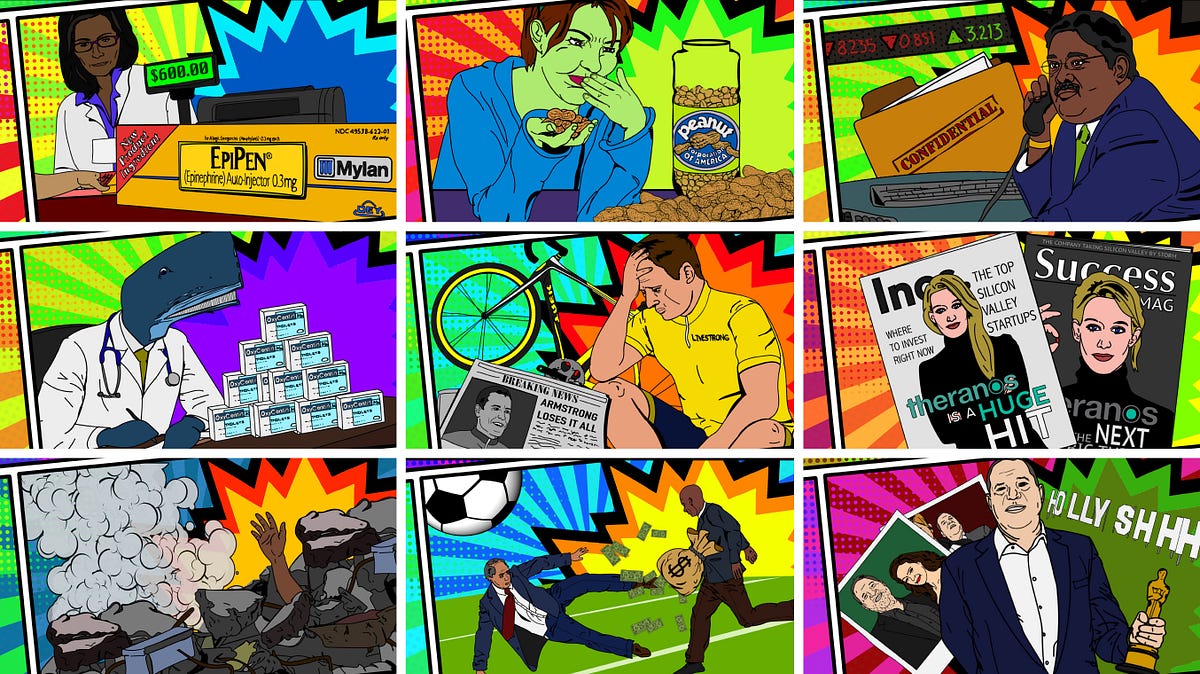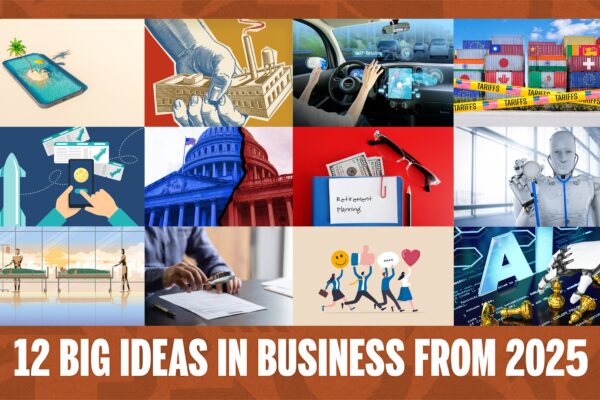Ethics Demystified
A free video-based ethics curriculum is putting a new face on an age-old problem—and helping educators light a better path for students
Based on the research of Cara Biasucci and Robert Prentice

It was Civil War-era writer Ambrose Bierce who defined a corporation as “an ingenious device for obtaining profit without individual responsibility.” Anyone reading today’s headlines would be hard-pressed to argue that much has changed.
A parade of otherwise thriving corporations has recently been plagued with scandal: Volkswagen for cheating pollution emissions tests; Wells Fargo for creating fake accounts; Mylan for price-gouging its EpiPen; and Uber and Fox News for sexual harassment. Less newsworthy, but still costing U.S. companies up to $60 billion annually, are the daily cases of routine employee misconduct: embezzlement, theft of office supplies, and padding of expense accounts.
The question of how to keep people from loosening their ethics is as old as Plato, and it has today’s business schools scratching their heads. It’s not as if the schools have altogether ignored ethics, nor is it that their graduates lack a moral compass, says Robert Prentice, professor and chairman of the Department of Business, Government and Society at The University of Texas McCombs School of Business.
“The most significant problem is not psychopaths in the C-Suites — although there are some of those — or people waking up one day and vowing, ‘Today is the day I start my life of crime,’” Prentice says. “Instead, the most important question is, ‘Why do good people do bad things?’”
This question is the inspiration behind Ethics Unwrapped, a free, video-based behavioral ethics curriculum born at the McCombs School and adopted by a growing number of institutions around the world. Surveys of students and faculty members using the curriculum attest that the videos are effective at demystifying ethics for a modern audience, according to a study recently published in the Journal of Business Law and Ethics Pedagogy.
Driving Ethics Lessons Home
Ethics Unwrapped was conceived in 2011 after an anonymous donor gave $500,000 to the McCombs School to advance ethics education.
Even though ethics is a subject traditionally taught in philosophy or religion departments, real-world ethical scandals most famously take place in the world of business. The idea was to create a practical ethics curriculum for business students, but it became clear that the videos were effective across a range of academic disciplines.
Since its launch, the program has grown to include more than 100 short videos and supportive curriculum resources, freely available on the Ethics Unwrapped website. The materials have garnered numerous awards and have found their way into curricula across the disciplinary spectrum at such prestigious institutions as the Naval War College, and Harvard, Stanford, Columbia, and Oxford universities.
Ethics Unwrapped is today one of the most widely referenced ethics curricula in the world, accessed by 100 percent of the nation’s top 20 research universities and 85 percent of the top 20 universities worldwide. The videos have been viewed 1.4 million times as of June 2018,
In a two-year survey of approximately 8,600 UT undergraduates, 90 percent reported that watching the videos created for the program helped them understand complex ethics concepts. Before watching the videos, more than half of these students reported a lack of confidence in their ability to identify, discuss, or apply ethics concepts. After viewing, 88 percent of students reported feeling either “confident” or “very confident” in their ability to do these things.
Similarly, an assessment of 40 faculty members at UT and at other institutions who use the curriculum revealed that 95 percent of them found the videos helpful for teaching and learning, say study authors Cara Biasucci, creator and program director for Ethics Unwrapped, and Prentice, faculty director for the program. UT faculty from a wide range of academic areas — business, fine arts, liberal arts, communications, natural sciences, and education — use Ethics Unwrapped.
Meeting Millennials on Their Turf
The authors continue to add content to the Ethics Unwrapped collection, employing experts from several universities to draft the video scripts. The videos use a combination of voiceover, animations, and student interviews to succinctly define ethics terms, present real world-examples, explain basic concepts, and offer ideas for application.
Today’s students are sophisticated consumers of media, and they prefer stories about how peers have experienced the ideas over traditional lectures by professors, Biasucci says, noting the videos are designed to strike a conversational rather than a didactic note.
“The videos resonate with a diverse student population that is keen on watching — i.e., not reading — to learn,” she says. “Millennials and Gen Zers spend more than 50 percent of their waking time on screens. To meet them where they’re at is a big deal.”
Meeting them where they’re at is also the impetus behind a focus on behavioral ethics as opposed to only referencing ancient philosophical works, the authors said. Behavioral ethics goes a step beyond philosophy — which assumes that people will behave as they should if they know right from wrong — and economics, which assumes people rationally weigh the pros and cons of their ethical decisions.
“It helps close the gap between what people know that they should do, and what they actually choose to do,” Biasucci and Prentice say in their study.
It’s this real-world tone of the materials that appeals to Captain Peter Mantz, commanding officer at the Navy Leadership and Ethics Center, whose team is working to formally add the videos and other resources to the ethics curriculum for the Naval War College.
“We still study Plato and Aristotle, but these new materials get people thinking about, ‘What are some things in your own environment that can derail you ethically?’”
Grappling with Bullfighting
Nothing about these real-world scenarios is cut-and-dried, says David Kidd, a postdoctoral fellow at the Harvard University Graduate School of Education and assistant research director on a project to create assessment tools for ethics educators.
“The scenarios have people grappling with dilemmas that don’t have obvious, simple answers,” he says. One scenario he uses explains the complicated cultural forces behind bullfighting and gets students talking about the importance of understanding traditional belief systems in an increasingly interconnected world.
Kidd has used three of the Ethics Unwrapped scenarios in his pilot research: “The scenarios are so rich in the number of stakeholders mentioned or implied,” he says, noting that most of his research subjects could pinpoint at least six stakeholders in each ethical dilemma. “That’s important to instructors,” he said.
By tapping into students’ sense of responsibility to stakeholders, Biasucci and Prentice hope to help schools change today’s ethical tide and generate a more principled workforce: “We’re using the medium of film in its full capacity, to tell stories that appeal to the students’ emotional and moral sense as well as to the thinking part of their brain — ” Biasucci said: “To their hearts as well as their heads.”
“Teaching Behaviorial Ethics” was published in the Journal of Business Law and Ethics Pedagogy.
Story by Judie Kinonen
About this Post
Share:


